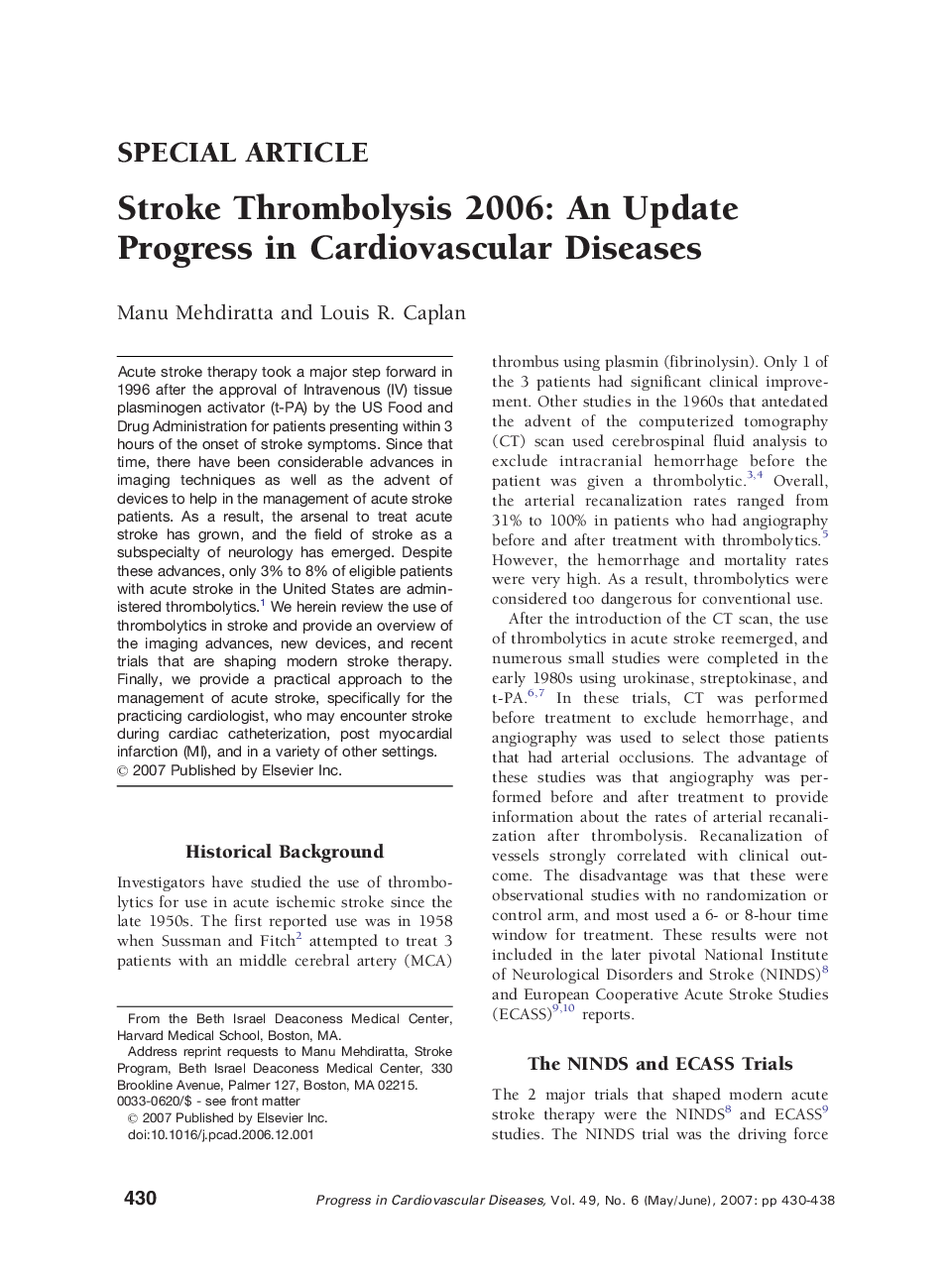| Article ID | Journal | Published Year | Pages | File Type |
|---|---|---|---|---|
| 3006833 | Progress in Cardiovascular Diseases | 2007 | 9 Pages |
Acute stroke therapy took a major step forward in 1996 after the approval of Intravenous (IV) tissue plasminogen activator (t-PA) by the US Food and Drug Administration for patients presenting within 3 hours of the onset of stroke symptoms. Since that time, there have been considerable advances in imaging techniques as well as the advent of devices to help in the management of acute stroke patients. As a result, the arsenal to treat acute stroke has grown, and the field of stroke as a subspecialty of neurology has emerged. Despite these advances, only 3% to 8% of eligible patients with acute stroke in the United States are administered thrombolytics.1 We herein review the use of thrombolytics in stroke and provide an overview of the imaging advances, new devices, and recent trials that are shaping modern stroke therapy. Finally, we provide a practical approach to the management of acute stroke, specifically for the practicing cardiologist, who may encounter stroke during cardiac catheterization, post myocardial infarction (MI), and in a variety of other settings.
